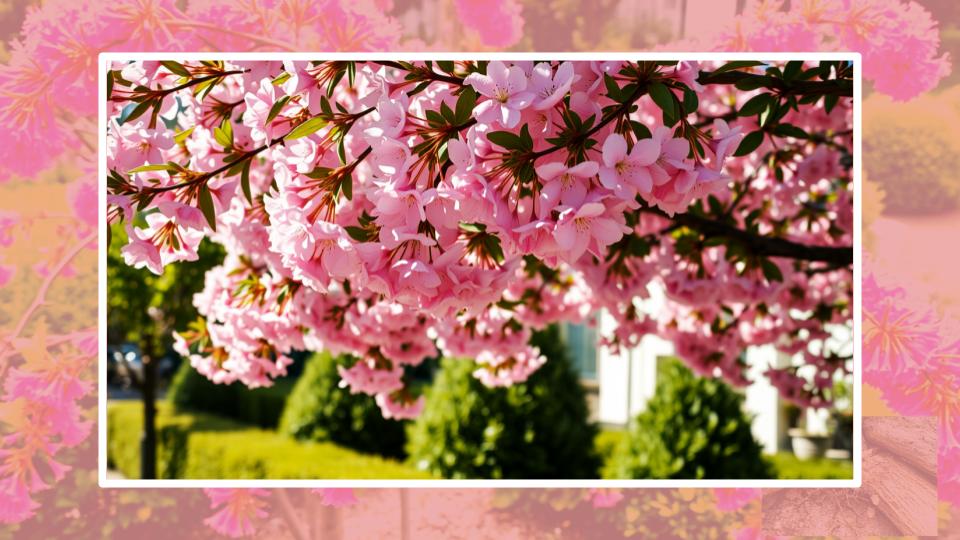
There are few things more breathtaking in a home garden than a flowering tree in its full spring glory. A canopy bursting with blossoms can feel like a dream come true, promising shade, beauty, and that picture-perfect curb appeal we all covet. But before you fall for the first pretty face at the nursery, a word of caution is in order. Some of the most enchanting flowering trees to avoid planting are, in fact, horticultural nightmares waiting to unfold. They lure you in with spectacular blooms, only to reveal their dark side through invasive roots, catastrophic messes, or shockingly weak branches.
As a horticulturist, I’ve seen the long-term regret that follows a hasty tree purchase. The goal is to cultivate a landscape that brings joy, not a decade of frustrating, back-breaking problems. This guide will walk you through six popular flowering trees that, despite their beauty, can cause serious trouble for the unsuspecting gardener. We’ll explore why they’re so tempting and, more importantly, the expert-backed reasons you should steer clear. Let’s save you the future heartache and help you choose a tree that will be a true asset to your beautiful yard.
Key Takeaways
Here’s what you need to know about choosing the right flowering tree:
- Look Beyond the Blooms: A few weeks of flowers can be followed by months of messy fruit drop, leaf litter, and invasive seedlings.
- Beware of Weak Wood: Fast-growing often means weak-wooded. Trees like Bradford Pear and Mimosa are notorious for splitting and breaking in storms.
- Check for Invasiveness: Many popular ornamental trees are non-native and can escape your yard, outcompeting native plants and disrupting local ecosystems.
- Consider the Roots: Aggressive, shallow root systems can heave sidewalks, crack foundations, and make it impossible to grow anything underneath them.
The Bradford Pear (Pyrus calleryana ‘Bradford’)
The Appeal: For decades, the Bradford Pear was the darling of suburban developers. It grows quickly into a perfectly symmetrical, lollipop-like shape and is covered in a breathtaking cloud of white blossoms in early spring. It seems, for a moment, to be the ideal street tree.
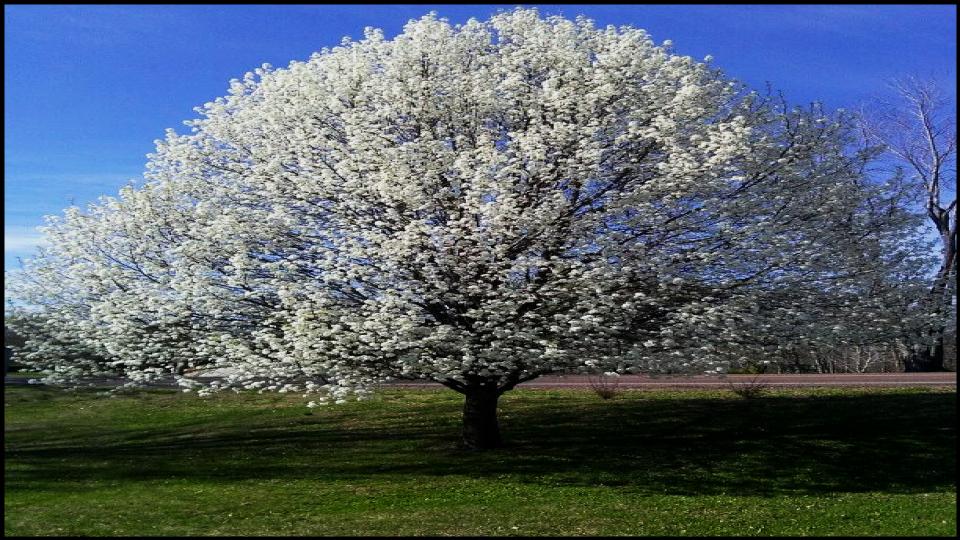
The Harsh Reality: The Bradford Pear is perhaps the most infamous tree on this list, and for good reason. Its biggest flaw is its dangerously weak structure. All of its branches tend to grow from a single point on the trunk, creating severe structural weaknesses. I’ve seen entire neighborhoods lose their mature Bradford Pears in a single ice or wind storm, a truly heartbreaking (and expensive) experience.
Beyond the breakage, there’s the smell. The flowers, while pretty from a distance, emit a pungent, unpleasant odor often compared to rotting fish. But the most significant issue, as confirmed by university extensions like Clemson University Cooperative Extension, is its invasive nature. Though the ‘Bradford’ cultivar itself is sterile, it cross-pollinates with other pear varieties, producing fertile fruit. Birds spread these seeds, leading to thorny, invasive thickets that choke out native plants in wild areas.
A Better Choice: For a similar cloud of white spring flowers without the risk, plant a native Serviceberry (Amelanchier). It has beautiful blossoms, edible fruit for wildlife (and you!), and stunning fall color.
The Mimosa or Silk Tree (Albizia julibrissin)
The Appeal: Who can resist the exotic, tropical look of a Mimosa? Its fern-like leaves and fragrant, fluffy pink flower clusters are simply dreamy. They hum with pollinators in the summer and create a lovely, filtered shade.
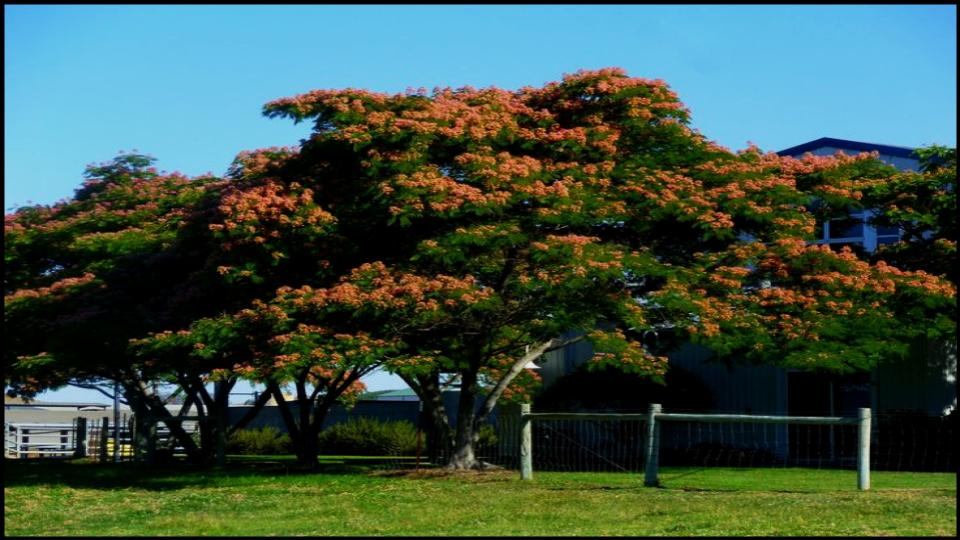
The Harsh Reality: This Asian native is a classic example of a beautiful but problematic tree. First, it is aggressively invasive in many parts of the United States. Its papery seed pods are produced in abundance and will sprout everywhere—in your lawn, your flowerbeds, and even in the cracks of your driveway. According to the North Carolina Extension Gardener Plant Toolbox, this fast-growing tree quickly displaces native species.
Second, it’s a remarkably messy landscape tree. It constantly sheds its flowers, leaves, and seed pods, creating a perpetual cleanup task. Third, like the Bradford Pear, it has notoriously weak and brittle wood, making it susceptible to storm damage. Finally, it’s a short-lived tree often succumbing to diseases like mimosa wilt, meaning your beautiful specimen may die in just 10 to 20 years.
A Better Choice: If you love the feathery foliage and pink flowers, consider the Prairifire Crabapple (Malus ‘Prairifire’). It offers stunning magenta blossoms, attractive foliage, persistent (and not messy) tiny fruits, and excellent disease resistance.
The Empress or Foxglove Tree (Paulownia tomentosa)
The Appeal: One look at a mature Empress Tree in bloom, and you’ll understand the temptation. Its enormous panicles of lavender, vanilla-scented flowers are truly spectacular, appearing before the leaves in spring. It’s also one of the fastest-growing trees in the world, promising a mature tree in a record decade.
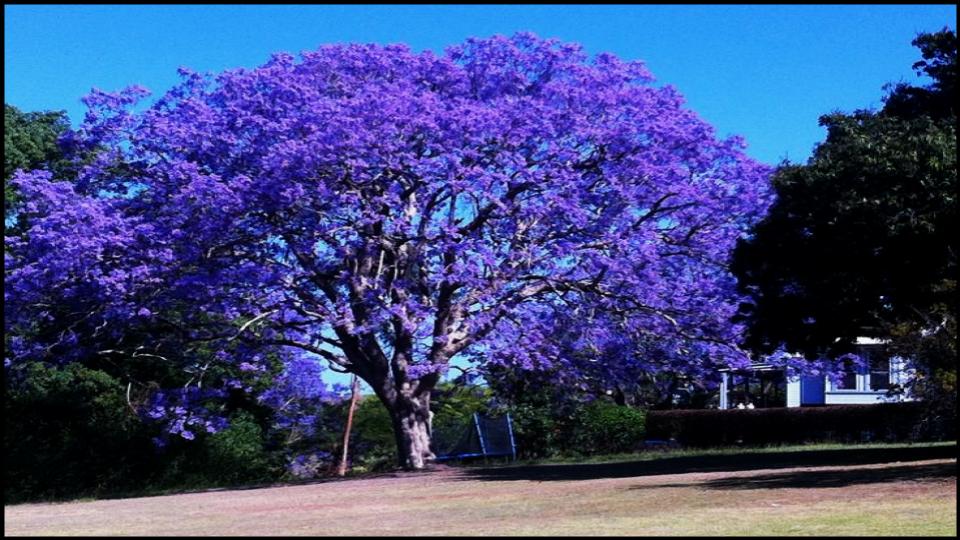
The Harsh Reality: Its rapid growth is a primary feature of its destructiveness. The Cornell Cooperative Extension calls it a “wolf in sheep’s clothing” for a reason. Paulownia is a highly invasive species in many regions, producing thousands of lightweight, winged seeds in each capsule that travel far and wide. It establishes itself in disturbed areas, creating dense stands that shade out native vegetation.
The wood is soft and weak, prone to breakage. Its large, heart-shaped leaves create dense shade, making it difficult to garden beneath it, and result in a significant cleanup job in the fall. Furthermore, its aggressive root system can pose a threat to sidewalks and foundations, making it one of the worst trees for small yards or for planting near a home.
A Better Choice: For a majestic tree with beautiful purple flowers, a native Eastern Redbud (Cercis canadensis) is a far superior and more responsible choice. It’s smaller, more manageable, and a vital part of the native ecosystem.
The Norway Maple (Acer platanoides)
The Appeal: The Norway Maple, particularly popular cultivars like ‘Crimson King’ with its deep purple leaves, is a handsome, fast-growing shade tree. It’s known for its dense canopy and tolerance of urban pollution and poor soils, which has made it a common choice for city streets and new developments.
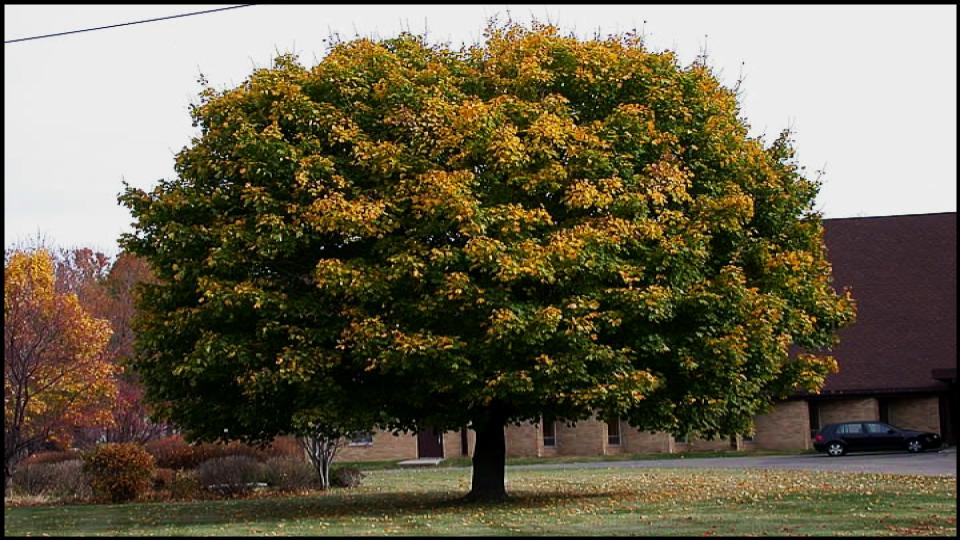
The Harsh Reality: Don’t confuse this European import with our native Sugar Maples. The Norway Maple’s dense canopy casts such deep shade that it often prevents grass and other plants from growing underneath it. Its most damaging trait, however, lies just below the surface. It produces a thick mat of shallow invasive tree roots that suck moisture and nutrients from the topsoil, outcompeting everything from your lawn to nearby shrubs.
As noted by the University of Connecticut’s invasive plant guide, it also seeds prolifically, invading nearby woodlands and displacing native maples and oaks. This reduces forest diversity and disrupts the local food web that depends on native species.
A Better Choice: If you desire a beautiful maple, choose a native Red Maple (Acer rubrum) or Sugar Maple (Acer saccharum). They provide brilliant fall color and function as cornerstone species in our native ecosystems, without the destructive habits.
The American Sweetgum (Liquidambar styraciflua)
The Appeal: Technically a native tree, the Sweetgum is admired for its beautiful, star-shaped leaves and absolutely spectacular fall color, which can range from yellow and orange to fiery red and deep purple on the same tree. It has a stately, pyramidal shape when young and is relatively pest-free.
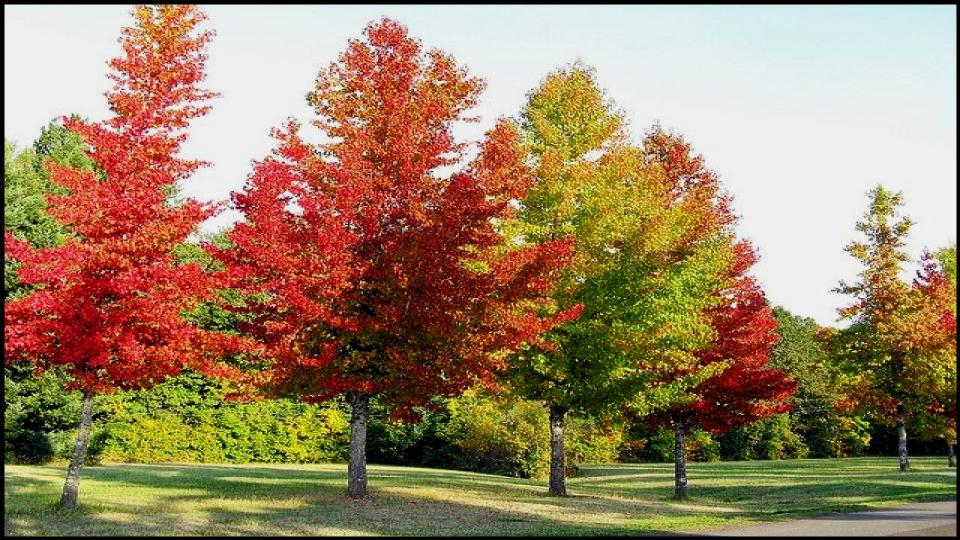
The Harsh Reality: The problem isn’t with the tree’s health or invasiveness, but with what it drops: hundreds upon hundreds of spiky, hard, gumball-like fruits. These seed pods are a menace. They are a serious tripping hazard on lawns and pavement, can damage lawnmower blades, and make walking barefoot in your yard an impossibility. Raking them is a frustrating and seemingly endless chore.
While beautiful, I always caution homeowners to think hard about the practical implications of this tree. If you have an active family that uses the lawn for play, the Sweetgum can render large parts of your yard unusable for much of the year. This is the ultimate messy landscape tree.
A Better Choice: If you want stunning fall color without the hazardous mess, a Black Gum or Tupelo (Nyssa sylvatica) is one of the most brilliant and reliable native trees for autumn foliage. It is also highly beneficial to wildlife. For a fruitless option, the ‘Rotundiloba’ cultivar of Sweetgum has rounded leaves and does not produce the problematic gumballs, as mentioned by Virginia Cooperative Extension.
The Russian Olive (Elaeagnus angustifolia)
The Appeal: With its delicate, silvery-gray foliage and small, fragrant yellow flowers, the Russian Olive offers a unique, almost ethereal look. It’s incredibly tough, tolerating drought, poor soil, and saline conditions where other trees might fail.
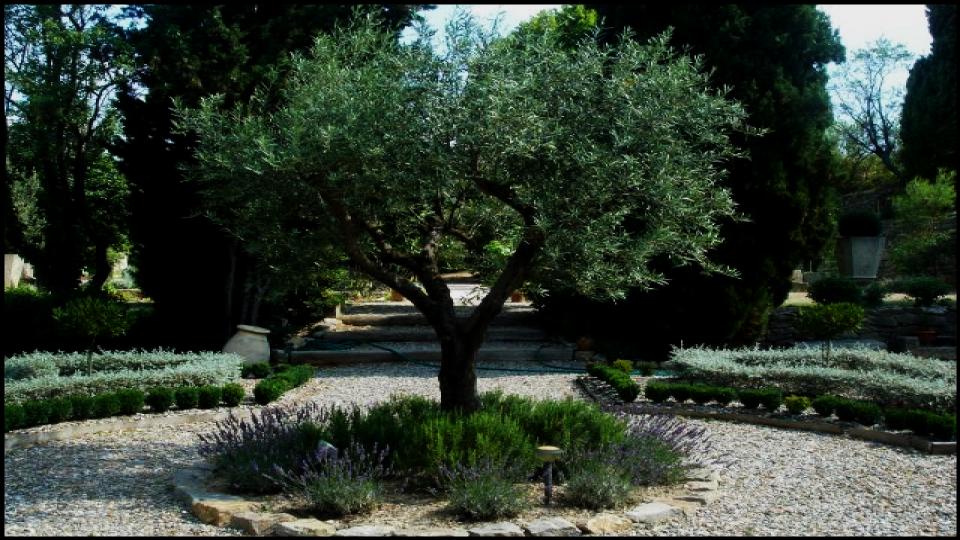
The Harsh Reality: This toughness is precisely what makes it a menace. Native to Europe and Asia, the Russian Olive is a highly invasive species in the United States, especially in riparian (streamside) areas. According to the USDA, it forms dense, thorny thickets that outcompete native cottonwoods and willows, altering the structure of these vital habitats.
It aggressively consumes water, sometimes drying up small springs, and fixes nitrogen in the soil, which can disrupt the nutrient balance needed by native plant communities. While its silvery foliage is pretty, planting this tree contributes to a significant ecological problem. Many states have classified it as a noxious weed.
A Better Choice: For a tough, drought-tolerant tree with silvery foliage, consider the Texas Olive (Cordia boissieri) in appropriate climates (zones 9-11) or the Netleaf Hackberry (Celtis reticulata), a hardy native with great wildlife value.
Planting for a Beautiful, Lasting Legacy
Choosing a tree is a long-term commitment, one that should bring you decades of beauty, not years of battling messes and breakages. The allure of a fast-growing, profusely blooming tree can be powerful, but a little patience and research go a long way. By understanding the potential downsides of these deceptively gorgeous trees, you are empowered to make a wiser, more sustainable choice.
Focus on trees that are well-suited to your space, that support your local ecosystem, and that will mature gracefully into the landscape of your dreams. Your garden should be a source of peace and pride, and with the right knowledge, you can ensure that the trees you plant today will become the cherished heirlooms of tomorrow.
Read More
How to Keep Your Geraniums Blooming Nonstop Through the Hottest Months
